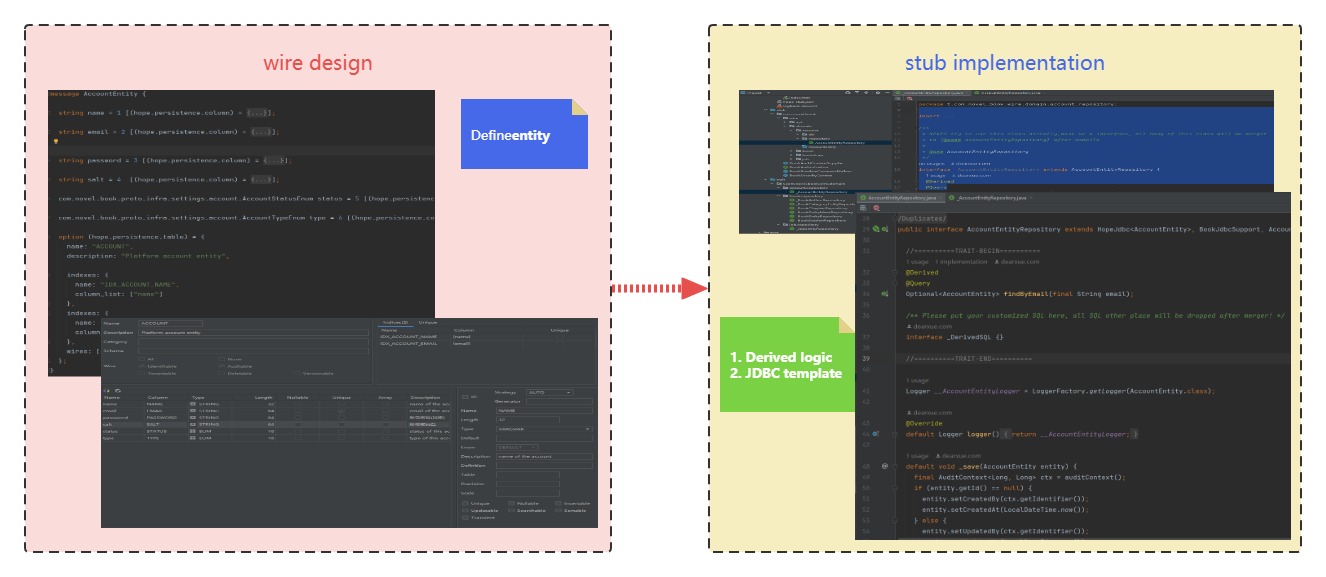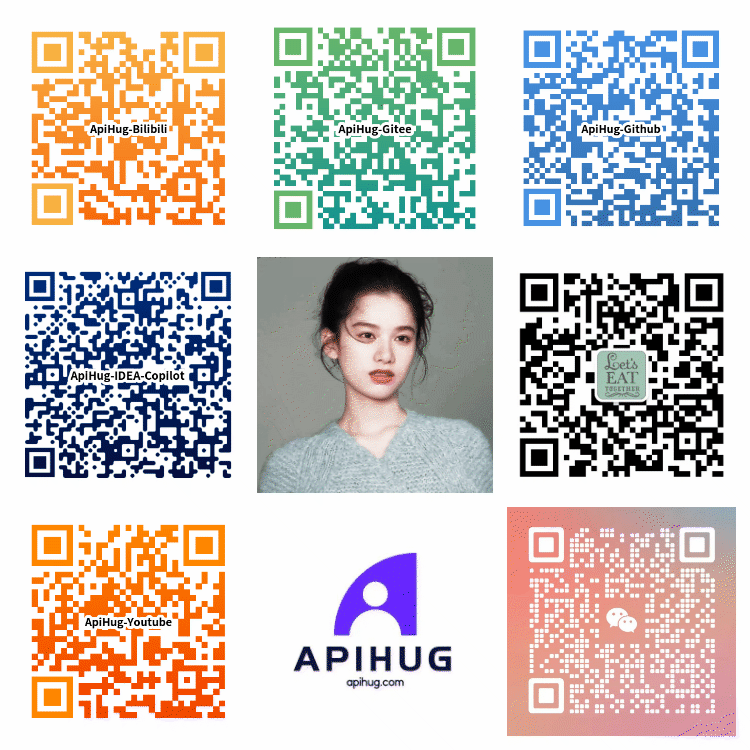
- SDK 0.7.8-RELEASE Big change
SDK 0.7.8-RELEASE Big change
0.7.8-RELEASE big change and migration steps
💁 If you never touch the ApiHug domain entity management, then this migration will never bother you. but better keep rolling release with us! :-)
0.7.8-RELEASE Add features:
- Move the
Repository@Derivedmaintain way toTraitseparated location, make code clean; liteas default model for the stub side, make it more swift;

Repository migration
Target:
- make generated repository pure and straightforward.
- make repository derived api easy to maintain
Take an exist repository: com.novel.book.wire.domain.book.repository.BookAuthorRepository in your module book-app as example:
Exist logic: in book-app\src\main\stub\com\novel\book\wire\domain\book\repository\BookAuthorRepository:
@Repository
@SuppressWarnings("Duplicates")
public interface BookAuthorRepository
extends HopeJdbc<BookAuthor>,
BookJdbcSupport,
BookAuthorDSL,
ListCrudRepository<BookAuthor, Long> {
@Derived
@Query
Optional<BookAuthor> findByName(final String name);
//Other method
}⚠️⚠️⚠️ You need to backup your @Derived method before run the stub command;
As now the stub dir code is pure generated, that meaning it can be totally removed in next round stub command.
Step1
Run the stub command of your module after upgrade the SDK version in the gradle\libs.versions.toml:
[versions]
# libraries
apihug = "0.7.8-RELEASE"Command line, check your project’s README.md:
./gradlew.bat book-app:clean stub build -x test -x stubTestAfter run successfully you will got a new sourceSet: book-app\src\main\trait;
💁♀️ you may need Reload Gradle Project from Gradle tool window, otherwise the book-app\src\main\trait may not be recognized as sourceSet
Step2
- Manually put the backup
@Derivedto the_BookAuthorRepository(trait dir) &BookAuthorRepository(stub dir)(only first time migration need this, to keep the old class compilable); - Kick off the
stubcommand again.
Since now all the @Derived Repository methods, will be maintained separated at book-app\src\main\trait
stubjob will merger them back to the runtimeBookAuthorRepositoryclass- Avoid any conflict in
BookAuthorRepositoryduring development(template code vs derived code), keep it pure and straightforward. - Much easier way to derived our repository API, the
traitfor SQL logic;
StepX
This way migration need more manually job, but much clearly;
- create directory
book-app\src\main\trait - create package
t.com.novel.book.wire.domain.book.repositorythat is prefix witht.of originalcom.novel.book.wire.domain.book.repository - add trait
interfaceclass_BookAuthorRepositorythat is prefix with_of originalBookAuthorRepository - make it
extends BookAuthorRepository - copy the
@Derivedmethod ofBookAuthorRepositoryto_BookAuthorRepository - run
stubcommand
This is a easier way for countable repository like less than 30 etc;
Real Project dir structure:
+---java
| \---com
| \---novel
| \---book
+---stub
| \---com
| \---novel
| \---book
| \---wire
| \---domain
| +---account
| | +---dsl
| | \---repository
| +---book
| | +---dsl
| | \---repository
| \---job
| +---dsl
| \---repository
\---trait
\---t
\---com
\---novel
\---book
\---wire
\---domain
+---account
| \---repository
+---book
| \---repository
\---job
\---repositoryPS
since SDK 0.8.5-RELEASE, introduce more way to handle those easier;
so after define a Entity in your proto and run stub command you will got a trait empty Repository:
/**
* NEVER try to use this class directly, keep it as an interface(default, no public), all body of
* this interface will be merger to {@link JobEntityRepository} after {@code stub };
*
* <p>NEVER try to Overwrite parent {@link JobEntityRepository } or {@link
* org.springframework.data.repository.ListCrudRepository} 's default method!!
*
* @see JobEntityRepository
* @see com.novel.book.wire.domain.job.JobEntity
*/
interface _JobEntityRepository extends JobEntityRepository {
/** Please put your customized SQL here, any SQL other place will be dropped after merger! */
interface _DerivedSQL {}
}Then you can write a customized DAO api:
@Overwrite
default void myDaoApi(){
}remember to add @Overwrite to this method, then the IDEA will remind you to Pull method 'myDaoApi' to 'JobEntityRepository'
Do as the IDEA suggest you, then this method will be pull to parent interface, this will avoid one round of stub command;
next time after kick off the stub command, you still get the exactly same code/logic.
Best Tips
You can consider the _BookAuthorRepository as Companion class of the BookAuthorRepository;
Only the ApiHug tool chain handle all those complexities for you!
Image the Companion objects in Scala;
IF YOU meet any problem during upgrade, please contact us:




